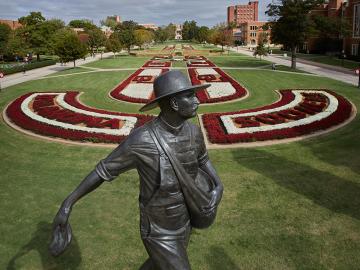Filter News
Area of Research
- (-) Computer Science (14)
- (-) Materials for Computing (23)
- Advanced Manufacturing (28)
- Biological Systems (16)
- Biology and Environment (72)
- Biology and Soft Matter (1)
- Building Technologies (10)
- Chemical and Engineering Materials (1)
- Chemistry and Physics at Interfaces (4)
- Clean Energy (319)
- Climate and Environmental Systems (6)
- Computational Biology (5)
- Computational Engineering (4)
- Electricity and Smart Grid (1)
- Energy Frontier Research Centers (7)
- Energy Sciences (4)
- Fossil Energy (3)
- Fuel Cycle Science and Technology (1)
- Functional Materials for Energy (6)
- Fusion and Fission (21)
- Fusion Energy (10)
- Geographic Information Science and Technology (2)
- Isotope Development and Production (2)
- Isotopes (13)
- Materials (279)
- Materials Characterization (2)
- Materials Synthesis from Atoms to Systems (5)
- Materials Under Extremes (5)
- Mathematics (1)
- National Security (32)
- Neutron Data Analysis and Visualization (2)
- Neutron Science (112)
- Nuclear Science and Technology (42)
- Nuclear Systems Modeling, Simulation and Validation (3)
- Nuclear Systems Technology (1)
- Quantum Condensed Matter (1)
- Quantum information Science (4)
- Reactor Technology (1)
- Renewable Energy (2)
- Sensors and Controls (3)
- Supercomputing (148)
- Transportation Systems (7)
News Type
News Topics
- 3-D Printing/Advanced Manufacturing (4)
- Artificial Intelligence (5)
- Big Data (3)
- Biomedical (2)
- Buildings (1)
- Chemical Sciences (3)
- Composites (1)
- Computer Science (15)
- Coronavirus (2)
- Cybersecurity (1)
- Energy Storage (4)
- Environment (2)
- Grid (2)
- High-Performance Computing (1)
- Isotopes (1)
- Machine Learning (3)
- Materials (8)
- Materials Science (12)
- Microscopy (3)
- Nanotechnology (4)
- National Security (1)
- Neutron Science (3)
- Polymers (5)
- Quantum Science (5)
- Security (1)
- Space Exploration (1)
- Summit (1)
- Sustainable Energy (6)
- Transportation (3)
Media Contacts

ORNL is home to the world's fastest exascale supercomputer, Frontier, which was built in part to facilitate energy-efficient and scalable AI-based algorithms and simulations.

Oak Ridge National Laboratory researchers collaborated with Iowa State University and RJ Lee Group to demonstrate a safe and effective antiviral coating for N95 masks. The coating destroys the COVID-19-causing coronavirus and could enable reuse of masks made from various fabrics.

Drilling with the beam of an electron microscope, scientists at ORNL precisely machined tiny electrically conductive cubes that can interact with light and organized them in patterned structures that confine and relay light’s electromagnetic signal.

More than 50 current employees and recent retirees from ORNL received Department of Energy Secretary’s Honor Awards from Secretary Jennifer Granholm in January as part of project teams spanning the national laboratory system. The annual awards recognized 21 teams and three individuals for service and contributions to DOE’s mission and to the benefit of the nation.

Researchers at ORNL used polymer chemistry to transform a common household plastic into a reusable adhesive with a rare combination of strength and ductility, making it one of the toughest materials ever reported.

A discovery by Oak Ridge National Laboratory researchers may aid the design of materials that better manage heat.

In experiment after experiment, the synthetic radioisotope actinium-225 has shown promise for targeting and attacking certain types of cancer cells.

Researchers at ORNL designed a novel polymer to bind and strengthen silica sand for binder jet additive manufacturing, a 3D-printing method used by industries for prototyping and part production.

Oak Ridge National Laboratory, University of Tennessee and University of Central Florida researchers released a new high-performance computing code designed to more efficiently examine power systems and identify electrical grid disruptions, such as

ORNL and the University of Oklahoma, known as OU, recently executed a memorandum of understanding to officially recognize their partnership in pursuing shared research and development goals.




